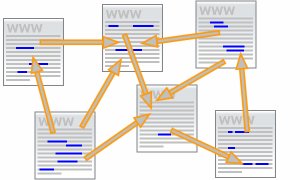The hypertext in itself has components to it that are very different from the traditional format we have with print publishing. As Jordyn talks about in her post, the hypertext causes us to have a nonlinear reading experience with the use of features such as hyperlinks that bring the reader to a different site. However, the hypertext still has some pieces to its format that are similar to past reading experiences. Two of those are the scroll and the codex. “Reading on Screen: The New Media Sphere” goes into how the scroll and codex are mimicked through online texts such as the hypertext through the scrolling motion of the cursor along the screen.
I do think that the hypertext is mostly exclusive to digital writing. Vicky proposes the argument that a hypertext can be printed out, however I think that it is much more practical for digital writing. If you print out a hypertext, you’re printing out many more pages than the primary text which could be very expensive. I think that the hypertext works best through digital writing.
One benefit of the hypertext is its nonlinear reading. When a reader clicks on a hyperlinked word or phrase he or she is brought to another page that expands on it. This helps the reader have a better understanding of the text. Christina brings up an interesting quote from Vandendorpe to discuss the disadvantages of the hypertext. I agree with her that the hyperlinks can cause the reader to become distracted from the primary text. This happens often when reading articles, especially if the hyperlinks that are incorporated aren’t completely relevant to the text.
I think the most interesting idea about the hypertext is how prevalent they are on digital writing. Its interesting because many old formats such as the scroll or codex come are incorporated into digital writing. I think its interesting how hypertext features are incorporated so much in digital writing, that we don’t even realize how much we are interacting with the hypertext.
Word Count: 335
Works Cited:
Vandendorpe, Christian. Reading On Screen: The New Media Sphere.
